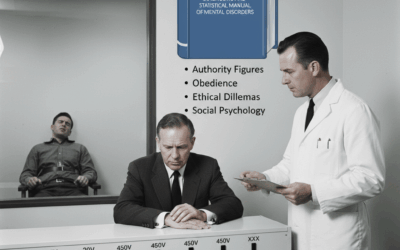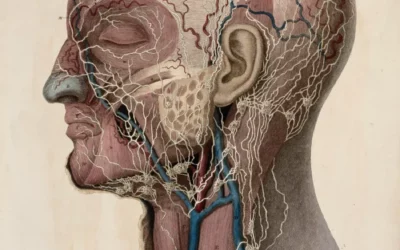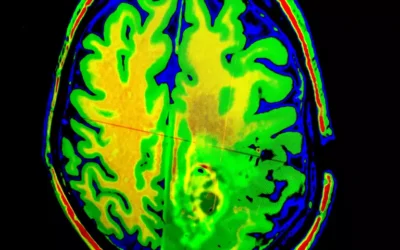
Resolving the Conflict Between Lizard and Mammal Brains
The human brain is an astonishingly complex and metabolically expensive organ. Weighing in at just three pounds, it consumes a whopping 20% of the body’s total energy budget [1]. This high cost is a testament to the brain’s incredible processing power, which has allowed humans to become the most intelligent and adaptable species on the planet.
But the human brain is not a monolithic entity. Rather, it is a product of millions of years of evolution, with different structures and systems emerging at different times in response to different environmental pressures. According to the triune brain theory, first proposed by neuroscientist Paul D. MacLean in the 1960s, the human brain can be divided into three distinct sub-brains, each with its own unique functions and evolutionary history [2].
At the base of the brain lies the reptilian complex, which is shared by all vertebrates and is responsible for basic survival instincts like feeding, fighting, and reproducing. Above that lies the paleomammalian complex, or limbic system, which emerged with the first mammals and is involved in emotions, memory, and social bonding. Finally, at the top of the brain sits the neomammalian complex, or neocortex, which is most developed in primates and is responsible for higher-order cognitive functions like language, abstract thinking, and long-term planning [3].
While the triune brain theory has been criticized by some as an oversimplification [4], it remains a useful framework for understanding how different brain systems can sometimes come into conflict with one another. This conflict is particularly evident in the case of post-traumatic stress disorder (PTSD), which can be seen as a clash between the primitive survival instincts of the reptilian complex and the more advanced cognitive and emotional processing of the mammalian brain.
At its core, PTSD is a disorder of memory and arousal. When a person experiences a traumatic event, their reptilian brain goes into overdrive, triggering the classic “fight, flight, or freeze” response. This response is mediated by the amygdala, a small almond-shaped structure in the limbic system that acts as the brain’s “threat detector” [5]. The amygdala is constantly scanning the environment for signs of danger, and when it detects a threat, it sends a signal to the hypothalamus, which activates the sympathetic nervous system and releases a flood of stress hormones like cortisol and adrenaline [6].
In the short term, this stress response is adaptive, giving the body the energy and focus it needs to deal with the threat. But when the threat is overwhelming or prolonged, as in the case of trauma, the stress response can become chronic and toxic. The amygdala becomes hyperactive, seeing danger everywhere, while the hippocampus, which is responsible for forming and storing memories, becomes impaired [7]. This can lead to a state of constant hyperarousal, where the person feels on edge and easily startled, as well as intrusive memories and flashbacks that feel as vivid and terrifying as the original trauma.
The problem is that while the reptilian brain is stuck in survival mode, the more advanced parts of the brain are trying to make sense of what happened and integrate it into the person’s overall sense of self and reality. This is where the conflict arises. The neocortex, with its capacity for abstract thinking and language, tries to put the trauma into words and contextualize it within the person’s life story. But the reptilian brain doesn’t speak the language of words and narratives; it speaks the language of sensations and impulses.
As a result, the person may find themselves feeling a profound sense of disconnection between their thoughts and their feelings, between their rational mind and their emotional body. They may know, intellectually, that the trauma is over and that they are safe now, but their body keeps sending signals of danger and threat. They may try to suppress or ignore these feelings, only to have them erupt in unexpected and frightening ways.
This mind-body split is at the heart of many of the symptoms of PTSD, from the emotional numbing and avoidance to the hypervigilance and reactivity. It’s as if the different parts of the brain are speaking different languages and cannot communicate effectively with one another. The result is a kind of internal chaos, where the person feels at war with themselves, torn between conflicting impulses and unable to find a sense of wholeness or peace.
The challenge of treating PTSD, then, is to find ways to bridge this gap between the reptilian and mammalian brains, to help the person integrate their traumatic experiences and regain a sense of control and coherence. This is where somatic-based therapies like Somatic Experiencing and Sensorimotor Psychotherapy come in. Rather than focusing solely on talking about the trauma, these approaches work directly with the body to release trapped survival energy and restore a sense of safety and presence.
One of the key insights of somatic therapies is that trauma is not just a mental phenomenon, but a physiological one as well. When the nervous system gets stuck in a state of hyperarousal or shutdown, it can be difficult to access the higher-order cognitive functions of the neocortex. By working with the body first, somatic therapies aim to regulate the nervous system and create a foundation of safety and stability from which the person can begin to process their traumatic memories and emotions.
For example, in Somatic Experiencing, the therapist might guide the person to notice and track their physical sensations, such as tension in the muscles or changes in heart rate and breathing. By bringing mindful attention to these sensations, the person can start to develop a greater sense of body awareness and self-regulation. The therapist might also use techniques like “titration,” where the person is encouraged to approach their traumatic memories in small, manageable doses, rather than becoming overwhelmed by them all at once.
Another somatic approach is Eye Movement Desensitization and Reprocessing (EMDR), which uses bilateral stimulation (such as eye movements or tapping) to help the brain process and integrate traumatic memories [8]. The theory behind EMDR is that when a traumatic event occurs, it can become “stuck” in the brain’s memory networks, preventing it from being fully processed and resolved. By engaging in bilateral stimulation while focusing on the traumatic memory, EMDR helps to “unstick” the memory and allow it to be integrated into the person’s overall life narrative.
Of course, somatic therapies are not a panacea, and they may not be appropriate or effective for everyone. Some people may find it difficult or triggering to focus on their bodily sensations, especially if they have a history of physical or sexual abuse. Others may prefer a more cognitive or insight-oriented approach, such as cognitive-behavioral therapy (CBT) or psychodynamic therapy. And for some, medication may be necessary to help manage their symptoms and improve their overall functioning.
Ultimately, the key to treating PTSD may lie in finding a balance between top-down and bottom-up approaches, between working with the mind and working with the body. Just as the triune brain theory suggests that the human brain is a product of different evolutionary layers, so too may the most effective treatments for PTSD involve a layered and integrative approach, one that addresses the different levels of the brain and the different aspects of the person’s experience.
This is where the exponential growth of human intelligence comes into play. Just as Moore’s Law describes the exponential increase in computing power over time, so too may the evolution of the human brain be characterized by an exponential increase in cognitive complexity and flexibility. As our brains have grown larger and more interconnected, we have developed an ever-greater capacity for self-awareness, empathy, and imagination. We are able to reflect on our own thoughts and feelings, to see ourselves from multiple perspectives, and to envision new possibilities for the future.
In the context of PTSD, this exponential growth of intelligence means that we are not limited to our primitive survival instincts, but have the potential to transcend them and find new ways of healing and thriving. By integrating the wisdom of our reptilian and mammalian brains, by honoring both our embodied experience and our cognitive insights, we can develop a more holistic and compassionate approach to trauma recovery.
This approach may involve a combination of somatic therapies, cognitive therapies, and other modalities, such as mindfulness meditation, expressive arts therapy, or neurofeedback. It may also involve a recognition of the social and cultural dimensions of trauma, and a commitment to creating more supportive and inclusive communities that can help prevent and heal trauma on a collective level.
Ultimately, the exponential growth of human intelligence gives us reason for hope in the face of even the most devastating traumas. By harnessing the power of our minds and bodies, by working together to create a more compassionate and resilient world, we can begin to heal the wounds of the past and create a brighter future for all.
As we continue to explore the evolutionary roots of PTSD and the potential for new and innovative treatments, it’s important to remember that healing is not a linear or predictable process. It requires patience, persistence, and a willingness to sit with discomfort and uncertainty. But with the right support and resources, it is possible to transform even the most painful experiences into opportunities for growth, connection, and resilience.
In the words of author and trauma survivor Michele Rosenthal: “Trauma creates change you don’t choose. Healing is about creating change you do choose.” By embracing the full complexity of our brains and our experiences, by choosing to face our traumas with courage and compassion, we can begin to create the change we wish to see in ourselves and in the world.
References:
- Herculano-Houzel, S. (2012). The remarkable, yet not extraordinary, human brain as a scaled-up primate brain and its associated cost. Proceedings of the National Academy of Sciences, 109(Supplement 1), 10661-10668.
- MacLean, P. D. (1990). The triune brain in evolution: Role in paleocerebral functions. Springer Science & Business Media.
- Cory, G. A., & Gardner, R. (2002). The evolutionary neuroethology of Paul MacLean: Convergences and frontiers. Greenwood Publishing Group.
- LeDoux, J. E. (2012). Evolution of human emotion: a view through fear. Progress in brain research, 195, 431-442.
- Phelps, E. A., & LeDoux, J. E. (2005). Contributions of the amygdala to emotion processing: from animal models to human behavior. Neuron, 48(2), 175-187.
- Yehuda, R. (2002). Post-traumatic stress disorder. New England journal of medicine, 346(2), 108-114.
- Bremner, J. D. (2006). Traumatic stress: effects on the brain. Dialogues in clinical neuroscience, 8(4), 445.
- Shapiro, F. (2017). Eye movement desensitization and reprocessing (EMDR) therapy: Basic principles, protocols, and procedures. Guilford Publications.


























0 Comments